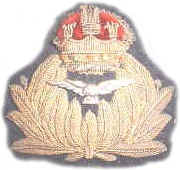In
the early part of the 20th century the British Royal Navy used balloons
and airships for reconnaissance. After the failure of the Royal Navy's
airship Mayfly in 1911, the naval minister, Winston Churchill,
began arguing for the development of military aircraft.
 |
In 1912 the government formed the Royal Flying Corps. The British Navy
was given the airships owned by the British Army. It was also given
twelve aircraft to be used in conjunction with its ships.
The first
flight from a moving ship took place in May 1912. The following year,
the first seaplane carrier, Hermes, was commissioned. The Navy
also began to build a chain of coastal air stations.
In January 1914 the government established the Royal
Naval Air Service
(RNAS). Within a few months the RNAS had 217 pilots and 95 aircraft (55
of them seaplanes).
|
|
One
of the most successful seaplanes purchased by the RNAS was the
Curtiss H-16, a craft produced by Glen Hammond Curtiss in the USA.
|
 |
By the outbreak of the First World War in August 1914, the RNAS had more
aircraft under its control than the Royal Flying Corps. The main role of
the RNAS was fleet reconnaissance, patrolling coasts for enemy ships and
submarines, attacking enemy coastal territory and defending Britain from
enemy air-raids. The leading war ace in the RNAS was Raymond Collishaw
with 60 victories.
 |
The RNAS was severely attacked for its failure to prevent the Zeppelin
bombing raids. In February 1916 there was a change of policy and the Royal
Flying Corps were given responsibility of dealing with Zeppelins once they
were over Britain. The RNAS now concentrated on bombing Zeppelins on the
ground in Germany.
Popular aircraft with these pilots included the Bristol Scout, the Sopwith
Pup and the Sopwith Camel.
The RNAS had 67,000 officers and men, 2,949 aircraft, 103 airships
and 126 coastal stations when it was decided to merge it with the Royal
Flying Corps to form the Royal Air Force in April 1918. |
|





